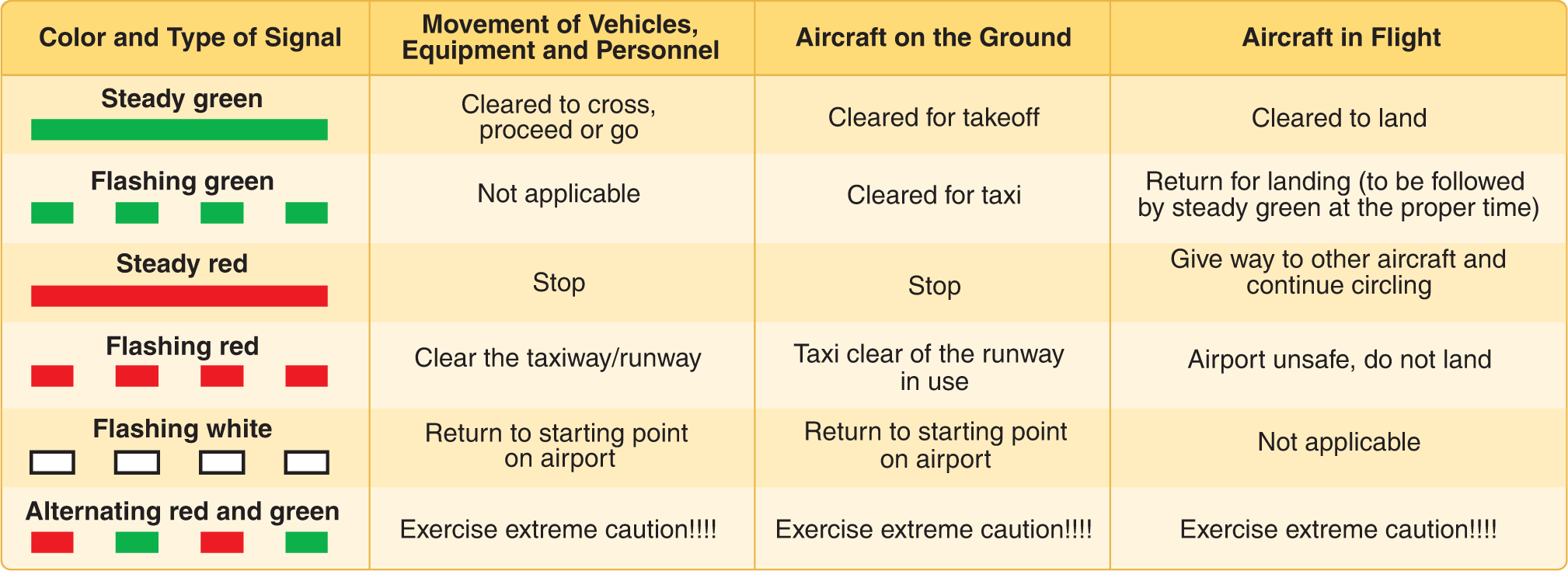Things can happen, and part of being a good aviator is competently handling adverse situations when they arise. It is possible that a pilot might experience a malfunction of the radio. This might cause the transmitter, receiver, or both to become inoperative. Here’s how to handle landing at a towered airport in this scenario, as illustrated in the Pilot’s Handbook of Aeronautical Knowledge.
First, it is advisable to remain outside or above Class D airspace until the direction and flow of traffic is determined. A pilot should then advise the tower of the aircraft type, position, altitude, and intention to land. The pilot should continue, enter the pattern, report a position as appropriate, and watch for light signals from the tower.
If the transmitter becomes inoperative, a pilot should follow the previously stated procedures and also monitor the appropriate ATC frequency. During daylight hours ATC transmissions may be acknowledged by rocking the wings, and at night by blinking the landing light.
When both receiver and transmitter are inoperative, the pilot should remain outside of Class D airspace until the flow of traffic has been determined and then enter the pattern and watch for light signals.
If a radio malfunctions prior to departure, it is advisable to have it repaired, if possible. If this is not possible, a call should be made to ATC the pilot should request authorization to depart without two-way radio communications. If authorization to depart without two-way radio communications. If authorization is given to depart, the pilot is advised to monitor the appropriate frequency and/or watch for light signals as appropriate.





